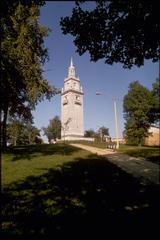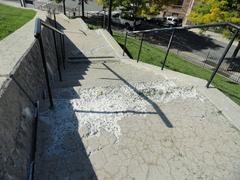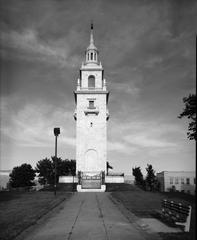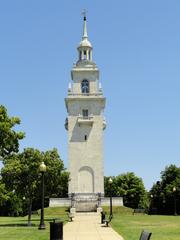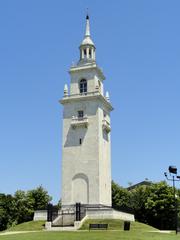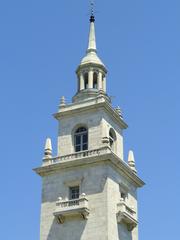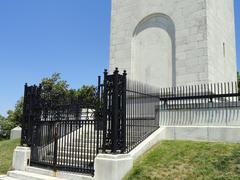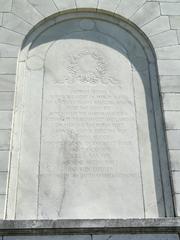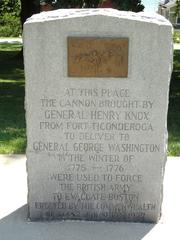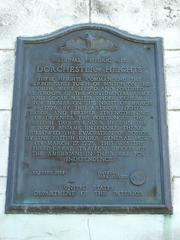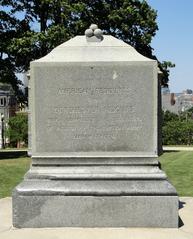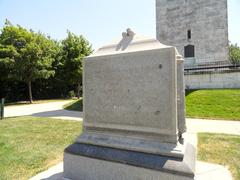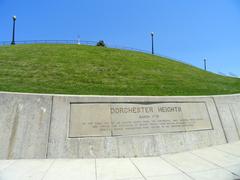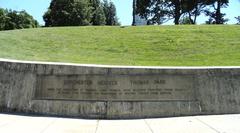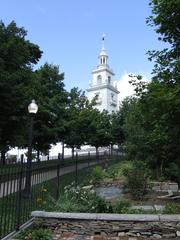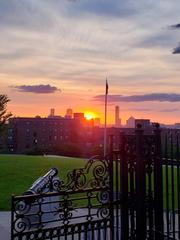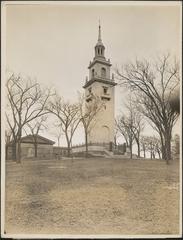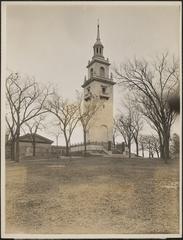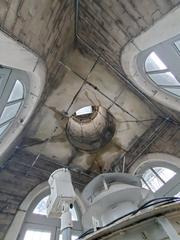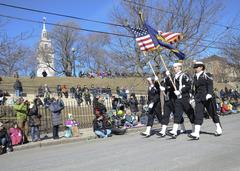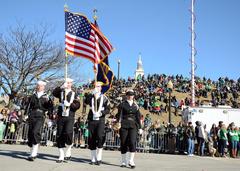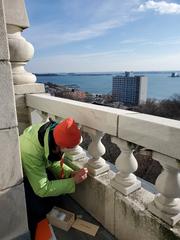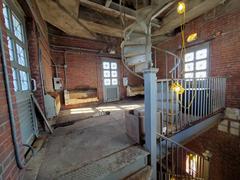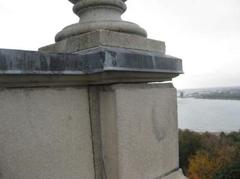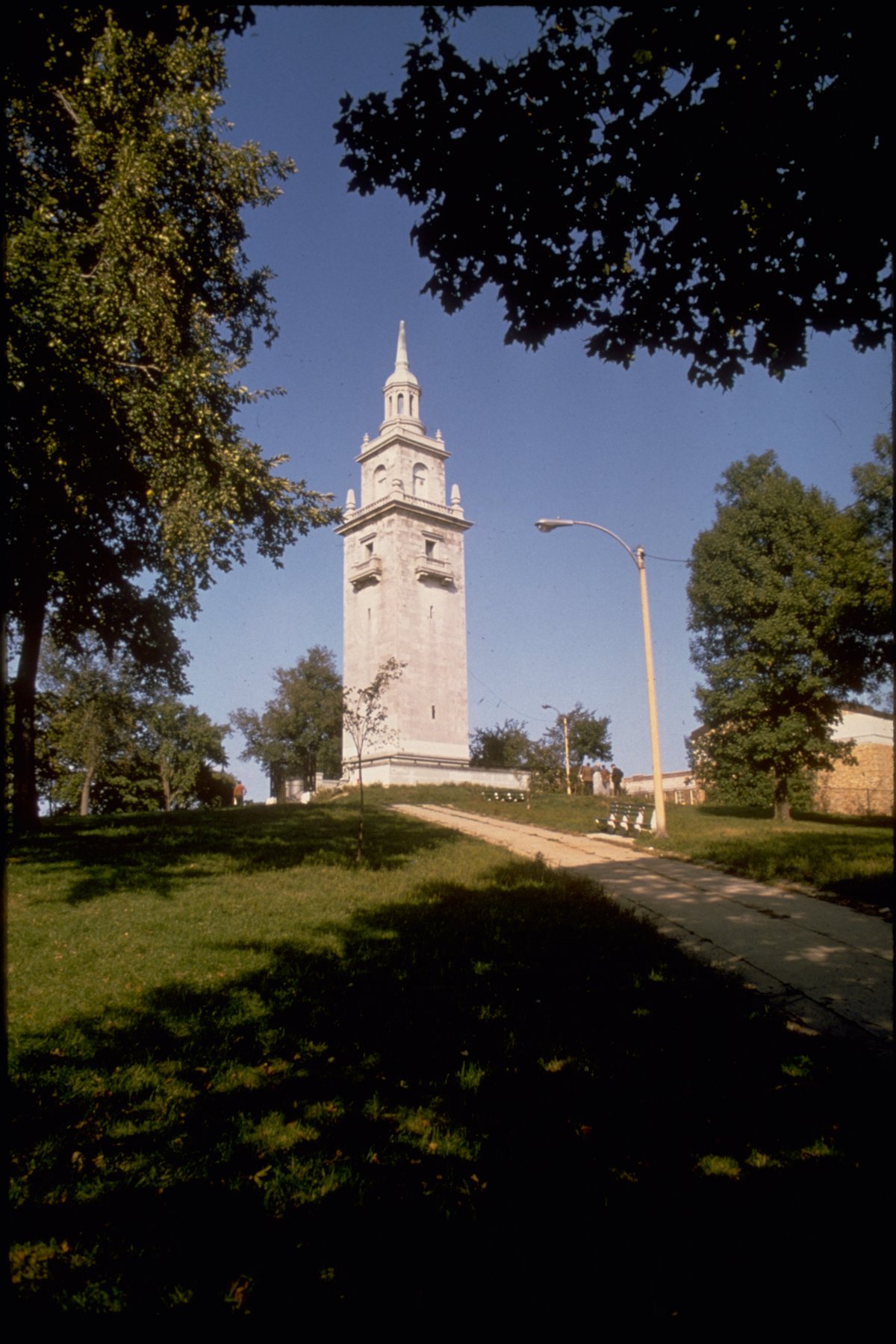
Dorchester Heights Monument: Visiting Hours, Tickets, and Complete Boston Historical Guide
Date: 14/06/2025
Introduction: The Legacy of Dorchester Heights Monument
Perched atop Telegraph Hill in South Boston’s Thomas Park, the Dorchester Heights Monument is a testament to one of the most pivotal moments in American Revolutionary history. Here, in March 1776, General George Washington’s Continental Army fortified the heights, leading to the British evacuation of Boston—a turning point that helped secure American independence. The monument, a 115-foot Georgian Revival marble tower completed in 1901 by Peabody & Stearns, not only honors this historic triumph but also provides sweeping views of Boston Harbor and the city skyline. This guide offers visitors detailed information on visiting hours, logistics, restoration updates, and tips to ensure a meaningful and memorable visit to this iconic Boston historical site.
For the latest updates, restoration progress, and planning resources, consult the official Boston National Historical Park website, McCourt Construction, MS Architects, and National Park Service Restoration Project.
Table of Contents
- Overview & Historical Significance
- Visiting Hours, Admission, and Accessibility
- Directions and Getting There
- Guided Tours & Visitor Resources
- Monument Architecture & Restoration
- What to See and Do
- Special Events & Anniversary Celebrations
- Nearby Historical Sites
- Visitor Facilities & Travel Tips
- FAQs
- Staying Updated & Further Resources
1. Overview & Historical Significance
The Role of Dorchester Heights in the Revolution
Dorchester Heights’ strategic elevation overlooking Boston and its harbor made it a military prize during the Siege of Boston (April 1775 – March 1776). On March 4, 1776, Washington’s troops fortified the Heights under cover of darkness, forcing the British to evacuate the city on March 17—a bloodless victory celebrated annually as Evacuation Day. The monument atop Telegraph Hill commemorates this event and symbolizes the ingenuity and determination that defined the American Revolution.
2. Visiting Hours, Admission, and Accessibility
Current Visiting Status
As of June 2025, the Dorchester Heights Monument and Thomas Park are closed to the public due to a major restoration project. The restoration, funded by the Great American Outdoors Act and local partners, is expected to be completed by early 2025 in time for the 250th anniversary of the British evacuation in 2026 (NewBostonPost).
- Typical Hours (upon reopening): Dawn to dusk daily for Thomas Park and monument grounds.
- Admission: Free for all visitors; no tickets required.
- Accessibility: ADA-compliant upgrades are a core part of the restoration, with paved pathways, ramps, and improved signage to welcome visitors of all abilities.
3. Directions and Getting There
- Address: Thomas Park, Telegraph Street, South Boston, MA
- Public Transit: MBTA Red Line to Broadway or Andrew Station, then a 10–15 minute walk.
- Bus: Several MBTA bus routes serve the area; check MBTA Public Transit Information.
- Parking: Limited street parking only; public transportation is recommended due to neighborhood congestion.
- Walking/Cycling: The park is accessible for pedestrians and cyclists, with bike racks nearby.
4. Guided Tours & Visitor Resources
- Ranger-Led Tours: Available seasonally via the Boston National Historical Park. Check schedules on the NPS website.
- Audio Tours & Apps: Download the official Boston National Historical Park app for interactive maps and self-guided tours.
- Virtual Access: During restoration, experience the site through official photos and virtual tours, and watch restoration progress via a live webcam (Caught in Southie).
5. Monument Architecture & Restoration
Architectural Features
- Design: 115-foot Georgian Revival marble tower by Peabody & Stearns, completed in 1901.
- Materials: White marble symbolizes purity and permanence.
- Symbolism: Lantern cupola represents Revolutionary beacons; the hilltop location signifies strategic and moral high ground.
Restoration Highlights
- Scope: Structural stabilization, masonry repairs, weatherproofing, landscape renewal, and ADA upgrades (MS Architects).
- Modernization: Improved HVAC, lighting, electrical, and interpretive features.
- Archaeology: Excavations have uncovered remains of the original Revolutionary War fort (McCourt Construction).
Restoration Timeline
- Closure: Began September 2023, led by Allegrone Masonry (Allegrone Masonry Project Updates).
- Reopening: Anticipated early 2025.
6. What to See and Do
- The Monument: Marvel at the tower’s design, inscriptions, and symbolism.
- Scenic Views: Enjoy panoramic vistas of Boston Harbor and downtown.
- Thomas Park: Relax in landscaped grounds, ideal for picnics or quiet reflection.
- Interpretive Displays: Learn about the 1776 events and ongoing preservation.
7. Special Events & Anniversary Celebrations
- Evacuation Day (March 17): Annual commemorations honor the British evacuation.
- 250th Anniversary (2026): Expect special events, lectures, reenactments, and expanded tours.
- Community Engagement: Restoration updates and public meetings maintain transparency and invite public input (Irish Massachusetts).
8. Nearby Historical Sites
- Bunker Hill Monument: Another key Revolutionary War site.
- Freedom Trail: Walk Boston’s 2.5-mile route connecting 16 significant sites.
- Boston Tea Party Ships & Museum, Beacon Hill, Fort Independence: All nearby and easily accessible.
9. Visitor Facilities & Travel Tips
- Amenities: Benches, lawns, and shaded seating; no on-site restrooms (visit local cafes nearby).
- Best Times: Early morning or late afternoon for fewer crowds and best light.
- Photography: The monument’s elevation offers superb city and harbor views.
10. Frequently Asked Questions (FAQs)
Q: Is there an admission fee or are tickets required?
A: No, entry is free and tickets are not required.
Q: Is the monument accessible for wheelchair users?
A: Yes, ADA upgrades are part of the restoration.
Q: Can I climb to the observation deck?
A: Yes, when restoration is complete, the interior staircase will be open, but always check current access policies.
Q: Are guided tours available?
A: Yes, seasonally—see the NPS website for details.
Q: Are pets allowed?
A: Leashed pets are permitted in the park; owners must clean up after them.
Q: Are restrooms available?
A: No, but nearby businesses offer facilities.
11. Staying Updated & Further Resources
Stay informed on reopening dates, restoration progress, tour schedules, and special event announcements via:
- Boston National Historical Park – Dorchester Heights
- National Park Service Restoration Project
- McCourt Construction Project Overview
- MS Architects Project Details
- Irish Massachusetts Blog
- Caught in Southie Community News
- Allegrone Masonry Project Updates
Summary & Travel Tips
The Dorchester Heights Monument is a cornerstone of Boston’s Revolutionary heritage—offering history, architectural beauty, and remarkable views in one site. Although closed for restoration until early 2025, the upgrades will ensure enhanced accessibility, interpretive experiences, and preservation for future generations. Use virtual tours and webcams to stay engaged during closure, and plan your visit around the reopening and 250th anniversary festivities in 2026. Leverage public transit, arrive early for the best experience, and make time to explore nearby historical sites on your Boston journey.
For more in-depth guides and audio tours, download the Audiala app and follow our social media channels.
References & Further Reading
- Boston National Historical Park – Dorchester Heights
- MS Architects – Dorchester Heights Monument
- NewBostonPost – Monument Restoration
- National Park Service Restoration Project
- McCourt Construction – Project Overview
- Irish Massachusetts – Restoration Funding
- Caught in Southie – Restoration Webcam
- Allegrone Masonry – Restoration Updates
- Massachusetts Office of Travel & Tourism
- MBTA Public Transit Information
